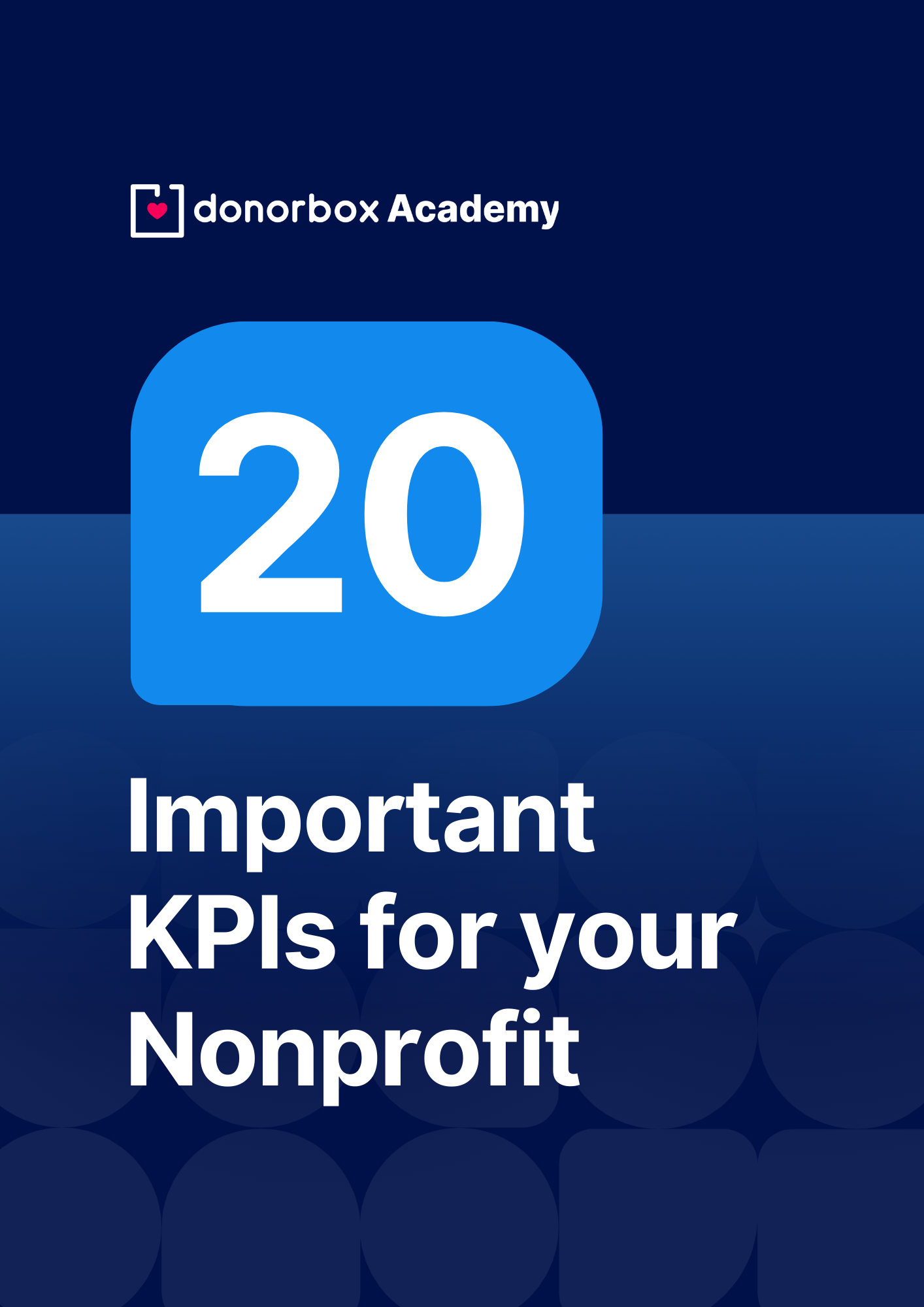If used correctly, KPIs can make a big difference for your nonprofit. When you make data-driven decisions, you are more likely to see improved results, as well as have an easier time tracking the success of various departments, programs, and more across your organization.
KPIs can be high-level data points, which are focused on the organization as a whole, or low-level data points, which can be as granular as the performance of a single team or employee. The KPIs presented in the downloadable resource above are targeted to five key areas of your nonprofit organization: Fundraising, Marketing & Communications, Programs/Services, Human Resources, and Financials.
We suggest starting out by picking out one to two KPIs from each category as your goals for a set period of time (perhaps a quarter of your fiscal year or a single fundraising campaign). After you master these KPIs, you can add more to your repertoire.
Follow these steps to put your KPIs to use:
- Step 1: Determine benchmarks for each of your selected KPIs. These benchmarks, which you can find through historical data, give you a starting point and help you see how far you’ve come at the end of your determined time period.
- For example, if you decide to focus on donor growth rate, you may find that you brought in 100 new donors last quarter – this is your benchmark
- Step 2: Next up, set your goals based on these benchmarks. Continuing with our donor growth rate example, you’ll now decide how many new donors you’d like to aim for, perhaps a 100% increase to 200 new donors in this quarter – this is your goal.
- Step 3: This goal should now inform your fundraising strategy and tactics for the next quarter. To acquire new donors, you may want to launch a peer-to-peer fundraising campaign or host a fundraising event and ask current supporters to bring one friend each, just to name a few ideas.
- Step 4: When the selected time period is over, look at the new data and compare it to the benchmark and your goal. In our example, you’ll take a look at how many new donors you have brought in, and see if you were able to bring in 200 new donors over the last quarter.
Ready to try your hand at setting KPIs and using them to make data-informed decisions for your organization? Download the free resource above and read this blog to find more KPI tips and best practices.








